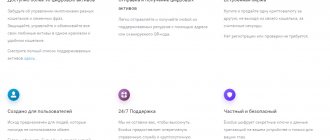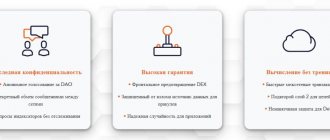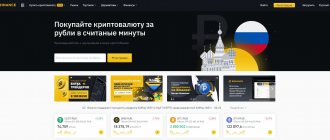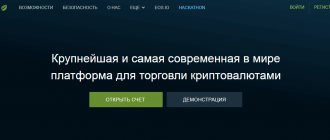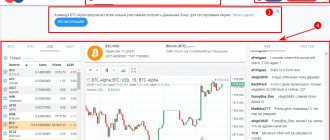Hello, fellow traders!
On the websites of Forex brokers you can increasingly see offers to replenish deposits and withdraw funds in the Tether USD cryptocurrency. Sometimes companies use the name “USDT tokens” or stablecoins, emphasizing their identity with the US dollar.
When trying to Google this topic, a trader may encounter a huge amount of information that is completely useless for a person who is only interested in the mechanism of a financial transaction. This article will briefly define stablecoins, debunk myths about the dangers of using Tether USD, and also describe a simple mechanism for depositing/withdrawing and exchanging USDT when using this cryptocurrency as a payment system for working with Forex brokers.
Token, cryptodollar and stablecoin Tether USD
As many people already know, Bitcoin became the first cryptocurrency to become widespread. The digital assets that appeared after it, which do not copy its blockchain structure, are usually called altcoins.
The largest altcoin was Ethereum, which differs radically from Bitcoin in the ability to launch smart contracts or decentralized applications (Dapps) on the blockchain. Thanks to this function, the process of creating your own cryptocurrency has been simplified by any user with programming skills.
Creating a token can be figuratively compared to writing an advisor in the Metatrader terminal. The trader independently writes a robot or indicator, whose capabilities are limited only by the imagination of the creator and the capabilities of the code.
Metatrader on Forex is far from the only trading platform that supports the writing and use of robots, and Ethereum in the cryptocurrency market is far from the only altcoin whose blockchain supports smart contracts.
Regardless of the type of altcoin, a digital asset issued on its blockchain using Dapps is called a token.
With the help of the code and the obligations assumed, the creator himself sets the rules for the circulation, exchange and economic value of this digital currency.
In 2015, an unknown company, Tether Limited, issued its own token, pledging to exchange it for real US dollars at a rate of 1 to 1. At that time, this crypto asset was profitable to use:
- Cryptocurrency exchanges to avoid Regulatory requirements for verification of traders who fund accounts in traditional currency (fiat);
- For American investors, to avoid paying taxes on every cryptocurrency-to-fiat exchange.
Both loopholes were closed by the end of 2016, but the USDT token received a tremendous boost in 2017–2018. Chinese authorities have banned cryptocurrency exchanges on the mainland, leaving local investors with only over-the-counter transactions to exchange yuan for USDT.
Chinese over-the-counter services purchased Tether USD tokens in bulk, resulting in issuances of several hundred million dollars per day. Without knowing the true reason for the appearance of tranches of this size, analysts blamed Tether for the unsecured issuance of tokens.
According to its obligations, the company was required to issue USDT only in exchange for real dollars. It was not possible to verify the collateral: Tether did not conduct an audit. Later it turned out that the company was hiding its connection with the Bitfinex exchange, the real owner of the business, and even later a hole was discovered in the dollar security fund for $850 million, which amounted to more than 50% of the security at that time.
The current situation with Tether USD collateral is as follows: in a trial in the state of New York, it was proven that the loss of funds was due to the fault of third parties; they were frozen by the American prosecutor's office in a Panamanian bank and its European accounts.
Tether did not inform its customers about this, which US law enforcement took advantage of and filed a lawsuit against the company. The process ended with the fact that, as punishment, the company would hire auditors on a quarterly basis for several years, proving that the USDT issue was backed by real dollars.
Traders can now safely use Tether USD without worrying about a possible scam. Moreover, tracking the issuance of USDT allows traders to see the moment when large capital enters the cryptocurrency market.
The release of any token is public information accessible through blockchain browser programs, whose statistics are analyzed by various specialized services. Notification about large tranches of Tether USD, as well as other cryptocurrencies, can be received, for example, through notifications of the @Whale Alert channel.
The historical graph of stablecoin capitalization demonstrates how connected the USDT emission is to the Bitcoin rate. This is what these tokens began to be called at the end of 2022, when the first competitors appeared, repeating the economic model of Tether.
Description and characteristics of Tether altcoin: USDT what currency is it
Tether token, according to technical documentation, has the following features:
- instantly issued as soon as the user transfers the equivalent in dollars to the company’s account;
- as soon as the amount is withdrawn to the user's account, the coins are canceled;
- can be stored and used similarly to Bitcoin, Litecoin or any other cryptocurrencies.
The developers emphasize that USDT Tezer holders should not completely associate them with dollars. The license agreement emphasizes that cryptocurrency is not fiat money in its electronic form.
The creators used the Proof-of-Reserves method (an alternative to Proof-of-Solvency), which translates as “proof of reservation.”
The reservation process occurs as follows: the requested USDT amount is verified on Block Explorer using special tools. The dollar amount that is equivalent to the purchased coins is immediately confirmed by bank accounts. The company periodically conducts cash audits so that users can ensure the safety and reliability of their investments.
Coin holders can use not only the dollar equivalent, they can choose the euro or any other world currency.
Benefits of USDT
- Stability. The Teaser USDT rate may fluctuate by no more than 2-3%;
- Each stablecoin is equal in value to one unit of fiat currency.
Disadvantages of USDT
- Increased attention from government authorities due to the dollar peg;
- If the dollar is subject to inflationary processes, the value and reliability of USDT will also be jeopardized.
Stablecoins
The name “stablecoin” means that the value of these tokens is strictly tied to an asset.
As a rule, to the US dollar. That is, the cost of stablecoins pegged to the dollar is always $1, while the rate of other cryptocurrencies to the dollar may change. Since 2022, the capitalization of Tether crypto-dollars has been constantly growing, reaching almost $52 billion. The only major reduction in emission occurred in October 2022, which led to a drop in the BTCUSD rate by 50%.
The chart above also shows that over the past two years and five months, USDT continues to hold the top spot among other stablecoin types. The scope of application and circulation of this cryptocurrency has already gone beyond the scope of operations on cryptocurrency exchanges.
Tether USD can be used to pay for goods, top up bank cards, get a loan, or invest in DeFi services to receive interest on the deposit. And the USDT token is ideal for Forex traders to deposit and withdraw funds.
Where to buy USDT token
You cannot mine the Tether cryptocurrency, you can only buy it. USDT cryptocurrency is traded on almost all major crypto exchanges. The list of partners where you can buy (or sell) USDT tokens is on the official website of the project.
The cryptocurrency demonstrates the highest average daily volumes in the following currency pairs:
- BTC/USDT;
- ETH/USDT;
The easiest way for users from the CIS is to buy Tether in online exchangers for fiat currency (dollars, rubles, hryvnia, etc.).
Buying a stablecoin through an exchange is more difficult, but the rate is more favorable.
Tether USD – the best deposit/withdrawal method for a Forex trader
Starting from 2022, the Central Banks of the Russian Federation and neighboring republics are tightening financial supervision and regulation of the Forex market. This has already led to the fact that some brokers refused to work with citizens of Russia and a number of countries of the former USSR, and some foreign companies lost the ability to withdraw and accept funds to some electronic payment systems.
A forced transition to another payment system for any trader is a difficult process in terms of account verification. This procedure is mandatory for working with any financial company due to the general international rules of KYC and AML: the world is moving towards openness, more and more supporting documents and time for their processing are required.
In case of using a crypto wallet for deposit/withdrawal of Tether USDT:
- The trader just needs to tell the broker the 33-digit withdrawal address or receive it to send dollars;
- The time required to open an account on the blockchain chosen by the broker (more on this below) takes a few minutes, which is required to download and install the wallet program;
- The USDT exchange rate is equal to the fiat dollar, the sending commission depends on the selected blockchain and can be calculated in “pennies”, the cost of withdrawing funds is determined by the broker;
- The crypto wallet does not require identity verification;
- Thanks to the public nature of the blockchain, a trader can always check whether the broker sent money for withdrawal or not; just request the hash code of the transaction;
- A developed system of exchange offices allows you to transfer received USDT to any bank card of a large bank or electronic payment system;
- The trader can exchange the money received for any cryptocurrency without any intermediaries or send it to a DeFi platform to receive passive income;
- The balance of some wallets is connected to VISA and Mastercard bank cards, ApplePay and GooglePlay systems.
The list of advantages can probably be continued: every year, many new and unusual uses for tokens appear in the cryptocurrency market. This happens due to the fact that there are no laws in this industry, and everything that can be described by smart contract code is permitted.
Among the disadvantages, it is worth noting an important point - the need for minimal knowledge about blockchain technology and digital assets in order to avoid troubles:
- Errors in the wallet address - sent payments cannot be returned;
- Selecting the type of blockchain, which determines the size of the commission paid and the availability of additional services;
- Loss of the wallet’s secret keys, without which access to funds can only be obtained using a special seed phrase (it must be generated and saved when you first start the program. Losing this set of words will forever deprive you of access to funds);
- Wrong choice of wallet type.
“Hot” wallets or an account on a cryptocurrency exchange mean that the trader entrusts the storage of his keys to a service or company. In this case, he must understand that he is exposed to the risks of scams, hacker attacks or technical problems that can destroy files or seed phrases.
Forex brokers also practice withdrawing deposits to the account replenishment address. Cryptocurrency exchanges periodically change these addresses, which creates problems for the trader.
How does Tether emission occur?
To purchase a teaser, you need to transfer the appropriate amount in dollars to your Tether Limited account. And this can be done by any individual or company.
After the transfer, a new cryptocurrency is created for the amount received (equivalent - 1:1). If an individual transferred $10 thousand, he will receive 10 thousand USDT in return. You can use the received tokens in different ways: exchange, transfer to other persons, various transactions.
The counterparty has the opportunity to return Tether tokens in order to repay their value in fiat currency. With this procedure, the returned tokens are destroyed and the dollar is transferred to the user's bank account.
How to Sell and Buy Tether
On the Binance exchange it is possible to buy Tether for fiat money. To do this, you can use a direct bank transfer or a credit card. Exchange via fiat balance is also available. Moreover, each transaction takes place with high speed and maximum security.
In addition, you can buy and sell USDT with cryptocurrencies. The USDT to Bitcoin exchange rate can be viewed in real time. More than 200 trading pairs with tether are available on Binance, including it is traded in pairs with fiat money. For example, in the corresponding section you can view the USDT to Ruble exchange rate for today and, if necessary, make a purchase or sale transaction.
Ten types of Tether USD – which one to choose?
In the cryptocurrency market, each blockchain has its own separate wallet that supports only that blockchain and all (any) tokens issued on its basis. This means that you can transfer ETH cryptocurrency and any token of the corresponding format to a wallet address, say Ethereum.
For example, the address of any Ethereum wallet is suitable for accepting USDT, USDC, sUSD, DAO and a dozen more varieties of ERC-20 crypto dollars. But BUSD will require opening a wallet on Binance Smart Chain, because it is a BEP-20 format token.
A wallet is a program where a developer can implement support for several types of blockchains. The cryptocurrency balance is tied to unique addresses, which can be generated an infinite number of times and placed on each individual deposit. The only problem is that the user will have to remember a unique password and seed phrase (more on this below) for each created address.
The Tether company uses smart contracts on the blockchains of existing cryptocurrencies to issue its own token. When the first USDT issue was released in 2015, Vitalik Buterin had just launched his Ethereum, which became the standard for Dapps and other digital currency projects.
Tether developers then opted for the Omni protocol, which connects the assets created in this application with blocks of the Bitcoin blockchain, which at that time had existed for five years with practically no alternative.
Now Omni technology is used less and less by Tether for two reasons:
- Hackers managed to steal USDT from this protocol once, although they were unable to withdraw all the money, since the company blocked the possibility of exchanging them;
- Confirmation of transfers occurs at the speed of creating BTC blocks, requiring three transfer confirmations, which take 30-40 minutes.
With the widespread adoption of cryptocurrencies, transaction speed has become of utmost importance. On the Ethereum blockchain, token transfers were confirmed within 15 seconds, and in terms of the number of nodes supporting the network and the reputation of reliability among users, Vitalik Buterin’s cryptocurrency was not inferior to Bitcoin.
Both factors led to the release of Tether USD tokens on the Ethereum blockchain in 2022. At the end of the same year, USDT was released on the Tron and EOS blockchains. Both systems at that time were considered by many analysts as an alternative to Vitalik Buterin’s system. The fallacy of these assumptions became clear in 2022, but by that time Tether continued its “technological diversification” by issuing USDT on all smart contract networks that were gaining popularity among users.
Brokers currently support the following USDT options:
- OMNI protocol;
- Ethereum blockchain with ERC-20 token format;
- Tron blockchain with TRC-20 token format;
- Binance blockchain with BEP-2 format;
- Binance blockchain with BEP-20 format.
But most often you will see ERC-20 and TRC-20. I advise you to stop there.
They can easily be distinguished from each other by address format. OMNI has the form of a Bitcoin format address that begins with a one or three. The Ethereum address starts with "0x", Tron starts with a capital "T", Binance starts with "bnb".
The initial letters of crypto addresses are unique for each cryptocurrency blockchain on which USDT tokens are issued. If a trader enters the wrong format into his wallet when sending a deposit to a broker, the program will generate an error.
The exception to these rules is the Binance Smart Chain (BSC) blockchain address format, which is BEP-20 (not to be confused with BEP-2).
The BSC address is identical in spelling to the Ethereum address (starts with 0x). The wallet program may not recognize the incorrect choice of ERC-20 and BEP-20 format. The trader will lose his deposit after such a transfer.
What is the backing of the USDT cryptocurrency?
As mentioned earlier, the main fiat backing for USDT is the US dollar, but over the past 6 years this fact has repeatedly become the reason for rumors and criticism from users against the issuing company. This is partly due to the fact that Tether Limited made adjustments to its token collateral policy in 2022. Since 2022, USDT continues to be issued at a fixed cost of 1 USD, but is only 74% backed by fiat currency. The remaining 26% of collateral comes from “other assets and potential income from loans issued by the issuer.” It is noteworthy that for 7 years there has never been an independent audit of Tether LTD, which may have been the reason for negativity from users.
Despite this, the issuing company always fulfills its financial obligations to clients in a timely manner, but reserves the right to refuse to provide services at its own request if the user does not comply with the terms of the transaction.
Select Token and Wallet
Before replenishing an account or withdrawing a deposit in USDT crypto-dollars, a trader needs to decide on the type of token format. Behind each of them is a blockchain, where the size of the commission is determined by miners who collect transactions into blocks.
The commission amounts are floating and depend on the load and capacity of the network blocks; the transaction amount does not matter . A trader can transfer one dollar or a billion for the same amount of royalties to miners.
At the time of writing, the average translation costs are:
- In the OMNI protocol – $28;
- Ethereum blockchain – $12;
- Blockchain Tron and Binance – about $1.
The choice of Tron and Binance will seem obvious to the trader, but Ethereum has more development prospects and opportunities for those who want to receive additional income by investing in the DeFi industry, where the profit on average is more than 50% per annum.
The Tether company, for its part, is making an equal bet on Ethereum and Tron, placing approximately $24 billion of USDT emissions there. The Omni protocol is almost abandoned.
After choosing a network format, the trader will first need to create a wallet. Today there are a lot of such programs, including those produced by hackers. They flooded the Internet with malicious links to phishing sites, sometimes completely copying the pages of popular wallets, with invisible differences or similar names in the page addresses.
Many people choose the simplest method and open an account on a cryptocurrency exchange. In this case, the issues of replenishing funds, purchasing and exchanging USDT back are greatly simplified. Many exchanges accept deposits from a large number of electronic wallets and bank cards, and work with national currency.
You will have to “pay” for convenience with the inconvenience of verification. If identity verification is not required, then the company’s work is not regulated by law, it can cease its activities at any time and disappear with the client’s funds.
A trader who chooses this path should definitely ask the support team how permanent the wallet address will be for accepting deposits in USDT. It is generated in the “Deposit” section, where you need to select the type of Tether USD (Ethereum, Tron, Omni, etc.).
The second way is to install a wallet yourself or use an online service, although the latter method is no different from opening an exchange account, because the keys to the wallet will remain in the hands of the company.
The list of wallets must be obtained from the website of the developers of the cryptocurrency chosen by the trader. You can get a link to it on the website of the oldest analytical service CoinMarketCap to avoid the risk of phishing.
On the main page of the site, select Ethereum (Tron, Binance, etc.) and click on the name of the cryptocurrency on whose blockchain USDT tokens were issued.
The business card that opens displays various resources; we are interested in the developers’ site.
Having opened the page, we look for a list of “wallets” recommended by the creators of Ethereum. On the site, this section was “in the footer” of the page. By the way, there is also a separate section dedicated to stablecoins. It discusses in detail their types, features, recommendations for use and types of earnings.
The list of wallets contains several dozen names of programs, when choosing which you should pay attention to the following issues:
- Where are the secret keys located? They must be under the control of the trader (we choose a non-custodial service or wallet type);
- Wallet versions – it is advisable to have a mobile version;
- Conveniences - various additional functions such as the ability to replenish cards, receive interest, connected exchange offices, etc.
Each wallet program on the developer’s website has an additional description of its functions and features; most versions are Russified. You will have to spend time getting acquainted, but much more effort will be spent on verifying a new electronic wallet with a Forex broker, which can then also be prohibited for input/output.
This will no longer happen with cryptocurrency, so this is a great chance to discover a new type of truly independent financial system. Having chosen the type of wallet, the trader must install it as regular software by downloading a file, extension or mobile application on the developer’s website, Google Play or AppStore.
The crypto wallet has a seed phrase - a set of words that helps the user regain access to their deposit from any device. Knowing this 12-word phrase, you don’t have to be afraid of any force majeure, because the cryptocurrency is stored not in the wallet, but in the blockchain.
Security
There are currently 64,483,887,186 units of stablecoin in circulation. If we take the USDT collateral as a percentage, then 75.85% of them retain their value through cash and various cash equivalents.
The tether also has the following types of support:
- approximately 15% of tokens are backed by loans;
- 9.96% – precious metals, corporate bonds and funds;
- other assets (including tokenized ones) are used to provide 1.64%.
Seed phrase
Seed - a phrase is a list of random words (12, 18 or 24 words) used to recover your funds in case you lose the password for your wallet application or the device on which your wallet is installed. Seed – The phrase is usually generated when setting up your crypto wallet.
Hackers can steal the password, but they will still need this phrase for access. The user must keep the seed phrase in a safe place and not disclose it to anyone. It is generated when you first install the wallet and looks like a meaningless set of words, for example:
When using the wallet on a daily basis, the trader uses a regular password. In the mobile version it can be replaced with biometric protection. The broker will need the trader's wallet address, which always has a copy function, to prevent input errors that will lead to the loss of the deposit.
You can paste the copied address into the withdrawal form using the Ctrl+V keys or the “Paste” command from the right-click menu.
As soon as the Forex broker indicates the withdrawal of cryptocurrency in Metatrader, the trader can check the receipt of the transfer without opening the wallet again. All cryptocurrency transactions are public and visible through the block explorer. The user simply needs to copy his address into the search window to see all the movements of tokens in the account.
Direct access to your Etherscan account is also implemented in the wallet program. USDT transfers will appear in the Token section.
By the way, the first Tether USD transaction will only be visible in the browser; In order for this balance to be displayed in the wallet, USDT will have to be added manually, this feature is explained by the thousands of types of digital currencies on the Ethereum blockchain.
The wallet has a special function for adding tokens, which can be found through a letter search or display the smart contract address. It is shown in the Tether USD asset business card on CoinMarketCap and is available in the Etherscan explorer.
How Omni Layer works
The Omni Layer project started in September 2013 under the name Mastercoin. Later, the company rebranded (in January 2016), and Mastercoin became known as Omni. The project works as an add-on to the Bitcoin protocol, which gives it additional functionality. These include smart contracts, custom currencies, and decentralized Peer-to-peer exchanges.
Omni is for Bitcoin what the HTTP protocol is for the fundamental TCP/IP transport. Only Bitcoin creates a connection between network participants (TCP-IP), and Omni transfers data (HTTP) and allows you to use functions that Bitcoin does not have.
Based on the global Bitcoin network, Omni automatically gains many benefits. The main ones are security (for example, from a 51 percent attack) and the stability of the BTC network. Omni nodes are also Bitcoin nodes. The security and reliability of the Bitcoin network is also increasing.
The coins created in Omni Layer are “tokens” on the BTC blockchain. Any wallet or exchange that supports BTC transactions will automatically support Omni token transactions. There is not even the need for additional software upgrades or modifications.
Every Tether transaction on Omni is recorded as a BTC transaction, shares the same transaction hash with it, and is confirmed on the Bitcoin network. The average transaction confirmation time is 10 blocks.
There are not many tokens based on Omni Layer: OMNI, MAIDSAFE, Synereo and SafeExchange. Tether is the most successful project and accounts for over 95 percent of all network transactions.
Features of USDT withdrawal
When receiving tokens from a broker, they can be withdrawn to any popular electronic wallet or bank card if available in the account:
- Cryptocurrencies ETH for ERC-20 format;
- TRX cryptocurrencies for TRX-20 format.
The easiest way to purchase it is through the exchanger aggregator Bestchange.ru. Its website contains exchange directions for the most popular electronic wallets and bank cards. A clear and simple interface will help you easily choose a cryptocurrency and payment system.
Having decided on the direction of exchange, pay attention to the list of companies:
- Select the appropriate minimum exchange threshold, for example, in the figure above, the best rate is offered for 1 ETH; it is unlikely that a trader will want to spend more than 200 thousand rubles to withdraw 100 USDT;
- Pay attention to the number of reviews - the more there are, the better, you can read the comments, problems are highlighted in red, sometimes this helps not to repeat the mistakes of others when filling out an application;
- Try to choose an exchanger with online support so you can quickly contact the operator in case of questions or problems.
The exchange process itself is very simple: transfer money to the specified e-wallet or card number, leaving your ETH address or TRX address. Wait for a message about the successful completion of the exchange, check your wallet balance.
Another alternative option - buying cryptocurrency on the exchange - will disappear by itself when you compare ETH rates on Bestchange.ru and the exchange platform. For those who find the option on the exchange better, look at the fees for replenishing the balance, the size of the spread of exchange quotes, the commission for orders and the withdrawal of cryptocurrency. By the way, to this we must add the miners’ commission, which is already taken into account in the Bestchange.ru exchange price.
The last very important point is the network commission. Purchasing ETH and TRX is necessary just to pay for it. USDT tokens, like any other ERC-20 asset, cannot be withdrawn from the wallet without a fee to the miners, which is charged in gas.
Gas is a relative unit of cost for expending blockchain resources to process transactions, measured in dollars but paid only in ETH and TRX. Therefore, stock up on these assets so that they will last for several USDT withdrawals. By the way, if the cryptocurrency rate rises, then the account balance in dollars will cover the trader’s commission costs, so it’s worth thinking again about how many altcoins to add to the account with a reserve.
Withdrawing USDT from a wallet through Bestchange.ru follows the above described scheme. We select a card or electronic wallet, and then the type of USDT token available on the account. We look at the minimum exchange amount, read reviews, pay attention to the availability of online communication.
The only problem: when exchanging USDT for fiat, the trader will have to pay a commission to the miners. Many wallets set it to the maximum level. We check the average commission here and correct it in the wallet manually, this applies to the ERC-20 token. In the case of TRC, the commission is almost always quite low, up to $1.
Is USDC a good investment? Pros and cons
USDC is a stablecoin, and if you are looking to invest purely for profit, then this is not what you are looking for. The price of a stablecoin has virtually no volatility.
However, USD Coin is the most transparent stablecoin in the crypto space. With that in mind, let's look at its pros and cons.
USDC pros
- USDC is backed by renowned companies and is fully funded in US dollars. These companies can be audited and held accountable.
- The Center Consortium and the companies behind it have made all data verifiable through public and internal audits.
- USDC is integrated with numerous apps and platforms and is primarily listed on Coinbase.
Cons of USDC
- USDC is a centralized stablecoin similar to CDBC. The issuer of the coin has complete control over it and can quickly close accounts and enforce decisions without consulting users.
Top up your account in USDT
The account replenishment operation is no different from the procedures described above. Having decided on a stablecoin format from the list supported by a forex broker, a trader should start by selecting and opening a crypto wallet.
Some beginners seek to simplify this process by sending USDT directly to the broker's address through an exchanger. It is worth remembering that the broker requires that the deposit address coincide with the withdrawal address, which in the case of an exchange will be random.
Similar problems will arise when trying to top up a deposit on the Forex market directly from a cryptocurrency exchange. It also uses random addresses for withdrawal. Permanence of the address can be guaranteed by these companies only for accepting payments, but not for withdrawal.
Having opened his own wallet, the trader must receive USDT on it, and then transfer it from his address to a brokerage account. The problem is that the last operation will require gas payment, therefore, you will have to top up your wallet in two cryptocurrencies - ETH (TRX) and USDT.
In reality, it is enough to send only ETH if the wallet (and the majority of them) has a built-in currency exchange. The received Ethereum can be converted into USDT, leaving a portion to pay the commission for withdrawing funds. Some programs support direct purchase of ETH from a bank card.
So, to work with Tether ERC-20, we first need to buy Ethereum, and then exchange part of the Ethereum for Tether USDT.
How to get USDT on the Ethereum (ERC-20) network?
The largest number of USDT tokens are issued on the Ethereum blockchain according to the ERC-20 standard, so below I will tell you in detail how to add the coin to the popular wallets Myetherwallet and MetaMask.
If, after reading the information about what Tether is, you have a desire to use this cryptocurrency, then I advise you to read my instructions.
In MyEtherWallet
First of all, you need to create a Myetherwallet wallet, this is done very simply and in one of my articles I have already talked in detail about this procedure. First, you need to log in to your wallet, then on the right side of the page, use the token search bar, as shown in the picture.
If the USDT token is not displayed in the list, then select the “ Custom tokens ” link.
A form will appear in which we copy the USDT data from etherscan.io. You need to specify the address, coin ticker, decimal places. Next, click save, and the token will appear in the list of tokens in your wallet.
Your USDT wallet number will be exactly the same as your Ethereum number. It is this number that needs to be inserted in investment projects, exchangers, etc. In addition, you need to have some Ether in your balance to pay the transfer fees.
In MetaMask
Login to the MetaMask extension and select the “ Ethereum Mainnet ” network. At the bottom, use the “ Add token ” button.
Next, go to the “ Custom Token ” tab. The exact same form will appear as in the case of the Myetherwallet wallet, copy the address from etherscan.io, the ticker and the number of decimal places will appear automatically.
After that, click “ Next ”. All you have to do is click the “ Add tokens ” button and USDT will appear in your wallet.
Working with a Forex broker through cryptocurrency exchanges
If the broker does not care about the address of the sender of funds or the exchange somehow guarantees its constancy, the trader can choose this platform for depositing and withdrawing USDT. The procedure for opening an account on a crypto exchange is quite simple; many companies only ask for an email address and after five minutes you can top up your deposit.
Choosing a platform to work with a broker comes down to the following important steps:
- Find out the cryptocurrency rate, for USDT it should be equal to approximately one dollar, +/-1%.
You can find out about the main exchanges that trade large volumes of USDT on the CoinMarketCap website by logging into the cryptocurrency business card and clicking the “Market” option:
- Find out the supported payment systems and commissions for input/output.
This information is located on exchange websites in the “Commissions” section, located in the footer of the site. If the resource does not support the Russian language, look for “Fee(s)” or type “Deposit” or “Withdrawal” in the search.
Let's look at an example of opening an account on the EXMO exchange. In the footer of the site we find the commission payments section:
Open this section and find a list of payment systems that support withdrawals in rubles. The trader must transfer USDT to the account from the forex broker, convert and withdraw to an electronic wallet or card. It is immediately clear that EXMO has no problems with this - Qiwi, ruble Visa and Mastercard are available with minimal commissions.
The last step remains - go to the trading terminal and find the USDT/RUB pair, which is trading at a rate of 71.63. It’s April 30, 2021, which means the difference with the commercial rate of the Moscow Exchange is 4.5%. Bestchange exchangers will exchange us USDT for Qiwi for 73.31 rubles.
3 MyEtherWallet
MyEtherWallet https://www.myetherwallet.com/
An open source mobile and web wallet developed in the Javascript programming language. Easy to use and provides a sufficient level of security for both Ethereum and various ERC20 tokens, including Tether. Allows you to interact with smart contracts on the ETH network.
User data is not stored on MyEtherWallet servers. Browser mechanisms are used to generate data; subsequently, the keys are stored on the user’s phone or computer, so there is no need to trust a third party with the security of their funds.
Sending, receiving, withdrawing USDT
There are no difficulties in sending and receiving USDT. You will receive a Bitcoin wallet address and USDT will be credited to it. To receive it, you need to go to the “Add Funds” page.
Here you will find the usdt wallet to which coins or bitcoins will be credited.
To transfer funds from a bank account, you must click on “Fund from Bank” and follow the instructions.
If you need to send USDT or Bitcoin, click on “Send Funds”.
Next, enter the Bitcoin address and the amount in USDT that should be transferred from the account. To withdraw USDT to your bank details, click on “Withdraw” and follow the instructions. You also have access to the function of converting bitcoins to USDT and vice versa. You need to click on “Convert” and perform a series of actions that will be indicated. That's all, now all possibilities for using USDT are open to you. But keep in mind: converting USDT to USD and vice versa is available only to those users who have verified their account.
Buying cryptocurrency
The platform excludes mining, so the only way to become the owner of tokens is to buy coins on a specialized resource. , almost all major platforms work with
Cryptocurrency can be purchased on exchange resources. The site bestchange.ru allows you to choose a favorable rate.
Buying through exchangers is the easiest way, but exchanges have better quotes. Most cryptocurrency resources do not accept fiat, so you will first have to purchase Bitcoin or another cryptocurrency that is exchanged for Tether.
Cryptocurrency exchanges Binance, Kucoin, Exmo, Huobi, Yobit, etc. where USDT is traded:
Multi-currency wallet Matbea
The matbea.com service offers a unique solution - create a wallet directly at the exchanger, equipped with the appropriate functions.
The owner of a cryptocurrency inevitably uses the services of online exchange services, which include matbea.com. As a rule, to carry out transactions, they stop at one exchanger:
- Long known, with a reputation;
- Always available;
- So that you can change popular moments through familiar payment systems, bank cards;
- With technical support that helps and does not waste time;
- With a working multi-level affiliate program. On Matby, partners are paid a percentage of each transaction of referrals - clients they brought to the service. You can get a source of passive income.
Create a wallet
If you create a multi-currency wallet on Matbi, you will not need to pay a commission for internal transactions.
Security Factors of Crypto Wallets
Special advantages of the wallet created on matbea.com, making it especially attractive and reliable:
- Only the owner has access to private keys;
- You can manage your balances from anywhere. Even after the service ceases to exist;
- To start working, you have to go through three-factor authentication (using SMS, PIN code, e-mail);
- Hacking of the service, which is extremely unlikely, does not pose a threat to the owner of the funds - they are stored in isolation).
Create a wallet
Mobile application from Matbea for transactions with cryptocurrencies
So that wallet owners can manage coins more quickly, Matby suggests downloading a mobile application on the service. The functionality is almost identical to that contained in the full version; only a specialist will detect the difference. Having two versions, you feel more confident and can quickly respond to exchange rate fluctuations.
Storing Tether on an Exodus wallet
You still haven’t decided where and how to store USDT, then we will recommend you a middle ground – the anonymous cryptocurrency wallet Exodus.
This anonymous multi-cryptocurrency HD wallet is good because it can be used on a PC (desktop version), and there is also a mobile version (in the form of an Android application). The Exodus wallet uses not only a password, but also seed phrases. So the security protection there is decent.


